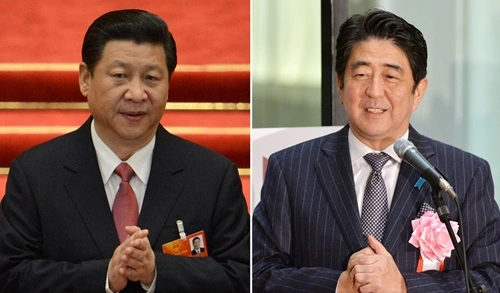The topic of distinguishing facial features between Chinese and Japanese people is a nuanced subject that requires sensitivity and an understanding of both anthropology and cultural context. While it is important to avoid stereotyping or making generalized assumptions, cultural heritage, geography, and evolutionary history have contributed to subtle differences in facial features among people from these two East Asian countries.
This article explores the facial differences between Chinese and Japanese people, examining factors such as genetics, geography, and cultural influences while emphasizing the diversity within each population.
1. Understanding the Context

Before delving into specific facial traits, it is essential to understand the context behind the perceived differences:
- Ethnic Diversity: Both China and Japan are home to ethnically diverse populations. China, in particular, has 56 officially recognized ethnic groups, while Japan, despite being more homogenous, includes indigenous groups like the Ainu and Ryukyuan people.
- Geographic Variation: Geography plays a significant role in shaping physical traits over generations. The vastness of China leads to regional variations, while Japan’s island geography has contributed to a more uniform population.
- Cultural Identity: Differences in grooming, fashion, and makeup styles often play a larger role in perceived distinctions than physical anatomy itself.
It is important to note that no characteristic applies universally to all individuals within a nationality or ethnic group.
2. General Facial Features: Genetics and Geography
Chinese Facial Features
China’s geographic diversity has led to variations in physical features across regions:
- Northern China: People from northern China often have broader, more angular faces, higher cheekbones, and stronger jawlines. This is attributed to genetic influences from neighboring Mongolia and Central Asia.
- Southern China: Individuals from southern regions may exhibit softer facial contours, smaller and narrower noses, and slightly darker skin tones due to subtropical climates and genetic influences from Southeast Asia.
- Eye Shapes: Chinese individuals often have a variety of eye shapes. Monolids (a single eyelid fold) are common, though many also have double eyelids, especially in southern China.
Japanese Facial Features
Japan’s relatively isolated island geography has resulted in a more homogeneous population:
- Facial Structure: Japanese faces are often described as rounder or softer compared to their Chinese counterparts. They typically have less angular jawlines and lower cheekbones.
- Skin Tone: Japanese individuals often have lighter skin tones, influenced by a colder climate and cultural preferences for lighter skin.
- Noses: Japanese noses are generally smaller and narrower, with a slightly upturned shape being a common feature.
- Eyes: Monolids are also common in Japan, but double eyelids are prevalent, sometimes enhanced by cosmetic surgery. Japanese eyes are often described as having a more almond shape with a subtle upward tilt.
3. Cultural Influences on Appearance
Cultural practices, beauty standards, and grooming habits greatly influence perceived differences in facial features. These factors often blur the line between physical distinctions and stylistic choices.
Chinese Beauty Standards
- Sharp Features: Contemporary Chinese beauty trends favor sharp jawlines, high cheekbones, and V-shaped faces. These ideals are often highlighted with makeup and contouring.
- Skin Tone: Fair, porcelain-like skin is highly valued, leading to widespread use of whitening products and skincare routines to achieve a bright complexion.
- Eye Emphasis: Makeup techniques often focus on enlarging the eyes, with eyeliner and eyeshadow creating a rounder, more open appearance.
Japanese Beauty Standards
- Youthful Appearance: Japanese culture often idealizes a youthful and innocent look, characterized by soft, smooth skin and understated makeup.
- Natural Aesthetic: Japanese beauty emphasizes natural enhancements. Minimalist makeup, light blush, and soft lip colors are common.
- Eyes and Brows: Straight eyebrows and slightly accentuated eyes are popular. Double eyelids are sometimes achieved through makeup or cosmetic procedures to enhance the almond shape.
4. Hair and Facial Grooming
Hair and grooming practices contribute significantly to how individuals from different cultures are perceived:
- Chinese Hairstyles: Hairstyles in China often range from sleek, straight looks to voluminous curls. In urban areas, bold, experimental hairstyles reflecting modern fashion trends are common.
- Japanese Hairstyles: Japanese hairstyles tend to focus on simplicity and elegance. Bangs and layered cuts are popular, as they frame the face and emphasize softness.
5. Clothing and Accessories as Influences
The way individuals dress and accessorize can also influence perceived facial differences:
- Chinese Trends: Chinese fashion often leans toward bold, colorful designs. Accessories, such as statement earrings or glasses, can draw attention to specific facial features.
- Japanese Trends: Japanese fashion is known for its eclectic mix of minimalism and avant-garde styles. Accessories like subtle jewelry or hats complement the overall aesthetic, often softening facial contours.
6. Anthropological and Historical Influences
The evolutionary history and migration patterns of East Asia have shaped the physical characteristics of Chinese and Japanese populations.
China’s Diversity
China’s vast size has resulted in a mix of ethnicities and genetic influences:
- Northern regions have connections to Mongolian and Central Asian populations, contributing to broader facial features.
- Southern China reflects influences from Southeast Asia, resulting in more diverse physical traits.
Japan’s Homogeneity
Japan’s island geography limited external influences, creating a more genetically homogenous population. However, the Ainu people of northern Japan and the Ryukyuan people of Okinawa demonstrate genetic and cultural diversity within the nation.
7. Misconceptions and Stereotypes
It is crucial to address common misconceptions:
- Overgeneralization: Physical traits vary widely within each country, making it impossible to define a universal “Chinese” or “Japanese” appearance.
- Cultural Bias: Assumptions about facial differences often stem from cultural biases rather than objective observation.
- Shared Heritage: Both China and Japan share historical and genetic connections, which can result in overlapping physical characteristics.
8. The Role of Globalization
Globalization and the rise of multicultural societies have further blurred distinctions between nationalities. Intermarriage, migration, and the influence of global beauty trends mean that physical differences are becoming less pronounced.
Conclusion
While there are subtle facial differences between Chinese and Japanese populations due to geography, genetics, and cultural practices, it is important to remember that these traits are not universal or definitive. Each country is home to diverse individuals with unique appearances shaped by personal, regional, and historical factors.
Rather than focusing on differences, celebrating the rich cultural and genetic diversity within and between these nations fosters a better understanding of East Asian heritage. When discussing physical characteristics, it is essential to approach the subject with respect and awareness of the complexity of human identity.



